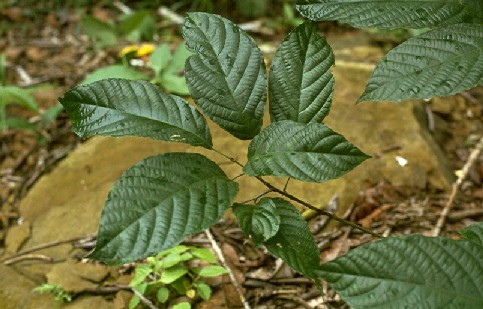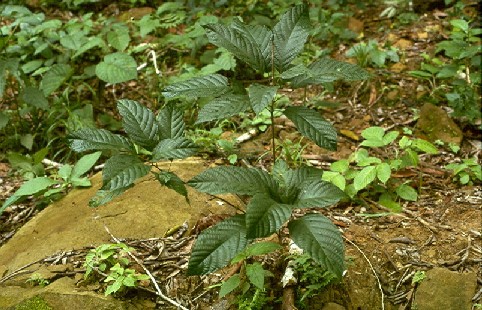Mallotus peltatus (Geisel.) Műll.Arg.
Shrubs to small trees up to ca. 12 m tall and 20 cm dbh, reproductive from 1 m tall and 1 cm dbh. Twigs solid, glabrous to hairy (short simple, tufted and stellate hairs). Stipules ovate to triangular, early-caducous, erect, 1.5-4 mm long by 1-1.5 mm wide. Petioles glabrous to hairy, up to ca. 11 cm long. Leaves alternate to sometimes opposite, when opposite only slightly different in size and petiole length, ovate to obovate, peltate or not, 9-28 cm long by 3-12 cm wide, length/width-ratio 2.27-3.11; secondary veins 8-14, not ending in the margin (looping); leaf base rounded to obtuse, often slightly cordate, peltate margin length (when present) 0.1-1 cm; leaf margin with glands, serrate or not; leaf upper surface glabrous to hairy on veins, with 2-many basal nectary glands on basal veins, some distance from petiole insertion, apical nectary glands present to absent; leaf lower surface glabrous to hairy, sometimes glaucous, (not) to sparsely to numerously gland dotted, with hair tuft domatia in axils of secondary veins. Staminate inflorescences not branched; flowers clustered per bracteole; bracteoles with entire margins. Pistillate inflorescences not branched; fruits 7-15 mm wide, 3-locular, with many long, curly spines.
Ecology: Collected up to ca. 700 m altitude. A relatively shade tolerant species, often found in slightly disturbed forest sites, Mainly along rivers and streams or in alluvial sites.
Distribution: From India and South China to New Guinea. In Borneo collected throughout the island.

